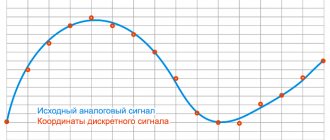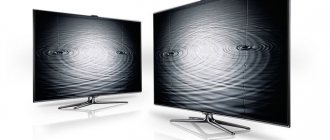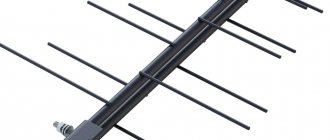Home page
All about TVs
Editor
Is it advisable to purchase a 4K TV for use at home? What is Ultra HD? Can 4K be considered identical to Ultra HD, or are there still some differences between them? If you believe the advertising, the refresh rate on 4K TVs exceeds 1000 Hz, is this true? Let's try to answer all these questions in our article.
4K, Ultra HD and Full HD
Let's start with a brief excursion into technical information in order to understand what we will talk about next:
- Full HD - 1920 by 1080 pixels with an aspect ratio of 16 to 9.
- Ultra HD (UHD) - with the same aspect ratio, the resolution is 3840 by 2160 pixels (the entire matrix has eight megapixels).
- 4K (full frame) - 3996 by 2160 pixels, and the aspect ratio is four to three (matrix resolution - twelve megapixels).
- 4K (caged) - the resolution is the same as the previous one, and the aspect ratio is Flat with a matrix resolution of eight and a half megapixels.
From the above data it is clear that Ultra HD has a different resolution from 4K, of which it is a type, only having a different name. The 4K value stands for four thousand horizontal pixels.
The difference between Ultra HD and Full HD is that it has almost twice as many dots (pixels), while the resolution is also twice as high both horizontally and vertically. Accordingly, the total number is as much as 4 times greater. What's the point of this?
The answer is simple: the size of the pixel (the controlled luminous point) is reduced, resulting in a picture of greater clarity when viewed even on huge displays.
Are there any quality standards?
To make it easier for consumers to identify products that provide the highest image and sound quality in this segment, the so-called UHD Alliance was assembled (it includes representatives of Sony, LG, Samsung, Dolby, Netflix and many others), which defined some standards and even came up with a logo .
The presence of this logo will ensure compliance with certain requirements for resolution, high dynamic range (HDR), peak brightness, black levels and wide color gamut. In addition, the specifications make recommendations regarding sound and other aspects.
It also includes recommendations on standards for 8K. Here, too, by the way, confusion is possible - 8K displays will be classified as UHD.
About TV screen resolution and size
There is no direct relationship between resolution and screen size. The main indicator is the number of pixels located inside. To make it clearer, you can turn to a phone camera. Let's assume its specification says a sensitivity of eight megapixels. This indicates the location of eight million pixels inside the receiving matrix, whose size does not exceed half an inch. They are just very small in size.
Now let's get back to TVs. Let’s say one 4K TV has a 20″ diagonal, and another has a 100″ diagonal. They both have the same number of pixels; the simple size of each in the latest model will be five times different. The presence of more pixels provides a clearer picture regardless of the screen size. This can be seen in the two pictures, but there are also some nuances:
The exception, or cheat if you will, is the artificial reduction of both color and contrast in the first illustration showing the resolution used in Full HD. The reality looks a little different, since the light emitted by the pixels has the same brightness in relation to each of the color segments.
Sitting close enough?
Absolutely right. Surely many have heard about Retina displays, which appeared “several iPhones ago.” This term should be taken as the effective resolution for a certain screen size. We can talk about such a thing as Retina distance, from which the human eye is not able to see individual pixels. Those. you can sit further away from your 1080p TV and get a Retina display!
Thus, simply changing a TV from FullHD to 4K with approximately the same diagonal will not give the desired effect. You'll either have to sit closer or buy a model with a noticeable increase in screen diagonal.
Overall, the ability to get closer to the screen without visually degrading the picture quality is a key feature of 4K. That is why it is not TVs that are becoming widespread, but monitors with 4K and even 5K resolution. If you are, for example, a professional photographer, then switching to a 4K monitor will significantly improve the quality of your work.
Should I buy a 4K TV for home or not?
To answer this question, it is necessary to assess its advantages and, if any, disadvantages. Let's start with the fact that, as a rule, 4K TVs have a curved screen. Therefore, you should be prepared for their significant cost.
Then there is the question of the availability of 4K shows and movies. The appearance of such content must be preceded by the development and release of equipment capable of filming with such resolution. And this is still at an embryonic level.
Watching movies or programs on a 4K TV, as well as an analog signal, is pointless, since in the old days no one even mentioned eight megapixels. Shooting, for viewing in Ultra HD resolution, must be carried out at a frequency of 120 Hz. But for such an impressive flow it is necessary to have means of transmission and storage. If the “weight” of one movie in Full HD resolution is 20 or 40 GB, then with a simple calculation for Ultra HD we get a size from 80 to 160 GB!
With such dimensions, it makes no sense to even talk about online views and the Internet. It will be possible to use exclusively media set-top boxes using a hard drive several terabytes in size. Provided that someone has uploaded at least a dozen or two films to it.
To be able to transfer content to the TV from media set-top boxes, the user will need not only an interface, but also a cord that complies with the HDMI 2.0 standard. You won't be able to use the old HDMI 1.4 to stream a lot of 4K video.
Due to the fact that the 4K signal has an impressive density and complex processing, it may be interrupted. This likelihood is greatest when displaying image elements that move quickly. And mobility is the prerogative of all modern cult films.
Summarize. To make our conclusion clearer, let's draw an analogy with a car. Buying a 4K TV for your home is practically the same as buying a powerful, sophisticated car that can accelerate to a speed of 300 km/h in a few seconds and drive it along city streets with a speed limit of 60 km/h. Of course, such an owner will be called cool, stylish, antler, but..... not very smart.
Is it worth buying 4k?
On all counts, the answer to this question is definitely “Yes!” But, let's take it in order:
- If you want a photo or video camera that will produce the highest quality content (photos, videos), then yes, you need a 4K camera;
- If you want a computer monitor that can easily display UHD WEB content and the latest games, then you need a 4K monitor. This also applies to professional designers and architects who need detailed graphics rendering;
- And finally, the most popular 4K product on the market is the TV. If you're looking for a wide range of entertainment options in the near future, which will certainly be coming over the next few years, then a 4K TV is a must-have.
To sum it up: is 4K here to stay?
So far, of course, everything looks exactly like this. 4K UHD technology is now advancing at a much faster, more stable, and more affordable pace than what we once saw with plasma TVs and are now seeing with incredibly expensive OLED display technology.
Let me remind you that the production of plasma TVs was completely stopped, since they lost the market race to LCD panels, the pace of development of which was significantly ahead of “plasma”. In addition, plasma had the disadvantages of high energy consumption and heat generation.
4K will almost certainly capture a huge share of the TV market, as the enormous potential of this technology is already visible, and more and more UHD content is appearing in the world.
Yes, major manufacturers are already working on developing even more powerful 8K technology, but it will be a while before this technology becomes commercially available.
So, for now, it all boils down to the fact that 4K is here to stay for at least the next few years, and giving UHD a try is a good idea, especially now that the prices of TVs, cameras, and even projectors are plummeting.
We'll probably end here. Questions in the comments are welcome.
We invite friends on VK and Twitter (links to profiles in the sidebar on the right). The site is new, so don't look at the small number of followers! I promise that the site will develop and delight you with interesting materials.
03 Sep 2021 S.Denchuk 67373
Share this post
Discussion: 14 comments
- Ivan:
10/04/2016 at 10:45I think 4K TVs are still very expensive. Moreover, you don’t want an eighteen-inch screen, which you can’t even put in the kitchen, but a large panel. But the prices for TVs from 65 inches are not at all encouraging. Also this dollar exchange rate...
Answer
V.Denchuk:
10/04/2016 at 10:52
Yes it is. You can certainly do without 4K for another couple of years, or even more. 1080p is quite enough for now, unless of course you have a bloated wallet











